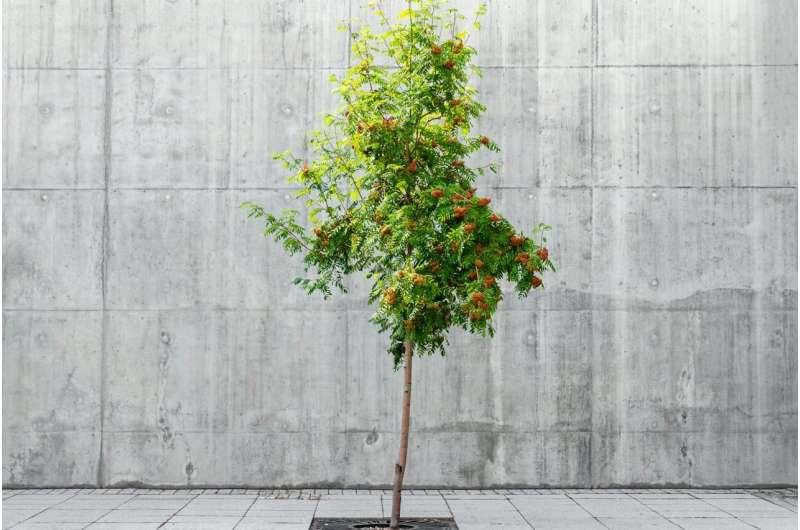This article has been reviewed according to Science X's editorial process and policies. Editors have highlighted the following attributes while ensuring the content's credibility:
fact-checked
trusted source
proofread
Study details strategies for successful urban tree planting initiatives

Collaborative research led by the University of Massachusetts Amherst outlines five essential themes to promote equitable and sustainable urban tree planting initiatives (TPIs), which is especially timely given the $1.5 billion for urban and community forestry contained in the 2022 Inflation Reduction Act.
While many cities and towns across the U.S. have undertaken large-scale TPIs, their success in the past has been mixed due to insufficient community engagement, inadequate tree care and lack of institutionalization.
Yet, there are constructive steps that municipal leaders can take to improve these urban greening programs, detailed in an article published recently in the Journal of the American Planning Association.
Led by Theodore Eisenman, associate professor of landscape architecture and regional planning at UMass Amherst, along with colleagues at the U.S. Forest Service and the Nature Based Solutions Institute, the study outlines a strategy for TPIs to allocate adequate resources across three phases: pre-planting, installation and post-planting.
This is a departure from business-as-usual––documented in a nationwide survey of TPIs, also led by Eisenman––where the majority of funding is dedicated to tree purchasing and installation.
Often predicated on ambitious planting goals, this approach leaves limited resources to engage community members, especially in marginalized neighborhoods, in developing pre-planting objectives and landscape design plans. It can also lead to inadequate support for post-planting watering and management of newly planted trees during their vulnerable establishment years.
This is not a minor consideration given that the average cost of planting a new urban tree can range from $500 to $3,500, and 30% of trees planted in urban settings typically die within five years.
"It is reasonable to ask if we would accept this level of failure for other kinds of public works and infrastructure, such as streetlights, bridges and sewer systems," notes Eisenman. "We need to dedicate significant resources not just to tree planting, but to the process leading up to the planting as well as post-planting stewardship."
According to Eisenman's co-author and frequent collaborator, Lara Roman, a research ecologist with the U.S. Forest Service, "Post-planting tree care like watering is essential to ensure the survival of urban trees, and deep engagement with local communities is a critical component for trees to serve neighborhood needs and priorities.
"I've collaborated with some amazing urban forestry organizations that have innovative strategies for both young tree maintenance and community engagement."
In addition to supporting all phases of a TPI, the researchers—who have more than 90 years of combined experience in related work—recommend that communities undertaking TPIs carefully consider tree species selection and location as part of a place-based approach to landscape planning and design guided by cultural and environmental context; conduct deep civic engagement in every phase of the effort; follow arboricultural best practices to ensure tree health; and consistently monitor the performance of projects and make changes when necessary.
Drawing upon a robust body of applied research, each of these five cross-cutting themes is described in a table in the article that lays out the three phases of a successful TPI.
While well-executed TPIs have the potential to increase the livability and sustainability of cities, Eisenman cautions that "greening is not a panacea." He says large-scale planting efforts and environmental interventions should be approached as one of many strategies, including those that address socioeconomic conditions, civic services and traditional hard infrastructure, to improve urban settings and enhance human health and well-being.
More information: Theodore S. Eisenman et al, Beyond the Golden Shovel, Journal of the American Planning Association (2024). DOI: 10.1080/01944363.2024.2330943. Open access version: PDF.
Provided by University of Massachusetts Amherst





















